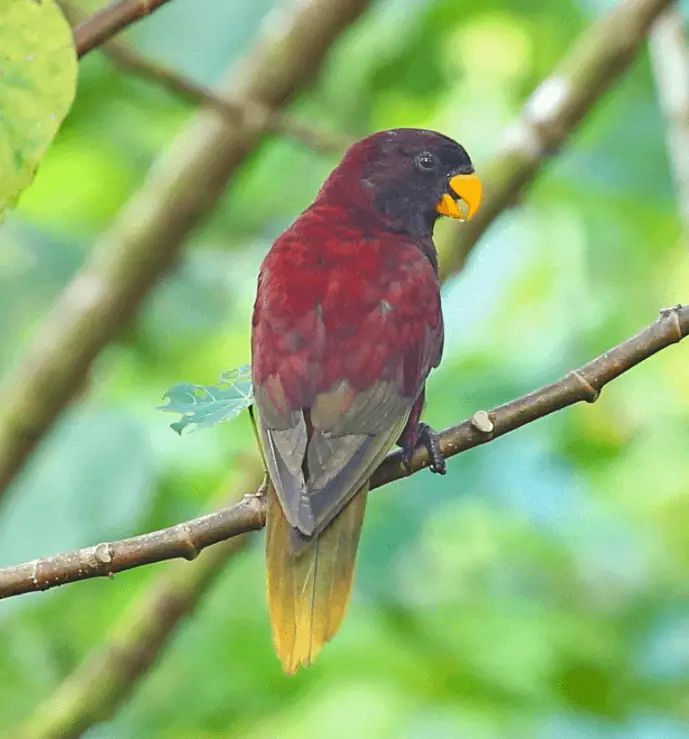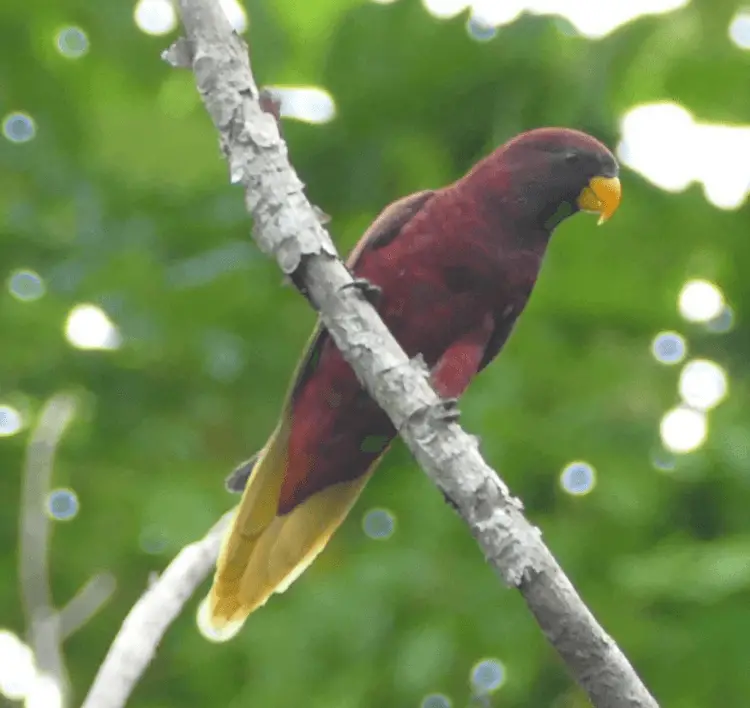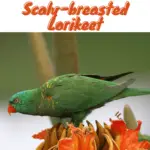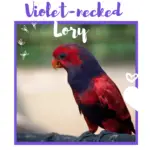
Pohnpei Lorikeet 24 cm; 70–85 g. Dark reddish maroon throughout, darkest on the head but with vague greyish scaling on rest of body; orange bill, grey legs, wing feathers dark yellowish-grey, tail greyish basally, dull yellow distally.
Systematics History
Member of the putative T. chlorolepidotus species-group (see that species). Monotypic.
Subspecies
Monotypic.

Distribution
Pohnpei, in E Caroline Is.
Habitat
Forest and plantations.
Diet and Foraging
Pohnpei Lorikeet eating Nectar and pollen of coconut palms; also fruit and fly larvae.
Sounds and Vocal Behavior
Has quite a large repertoire of harsh notes, chatters and more whistled notes, including a diagnostic over slurred “krr-EE-ah”, given both in flight and when perched.
Breeding
Breeding condition birds in Nov. Pohnpei Lorikeet Nest in the hole in coconut palm or another large tree. 1 egg. No further information.
Conservation Status
Not globally threatened. Currently considered Near Threatened. CITES II. A BirdLife “restricted-range” species. Common, especially in lowland plantations.




















